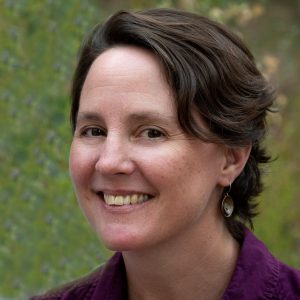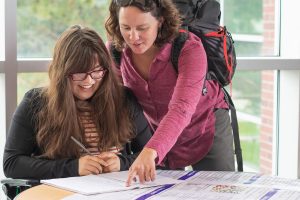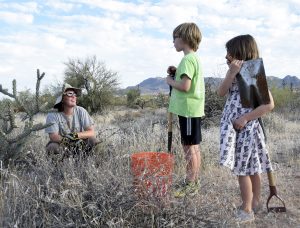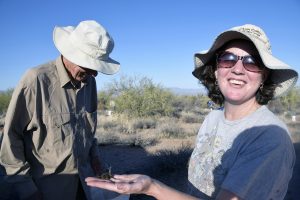Fairness First blog
Researchers voices in health equity
The Fairness First blog represents a space where researchers share with the broader community why health equity research matters to them, how do they connect to health equity, and what is the value of community engagement in the research process.
April 27, 2022
Healthy soils and health equity with Anita Antoninka
Associate Professor, Department of Biological Sciences

Anita Antoninka is an assistant research professor in the School of Forestry. Her research focus is soil ecology, community ecology, mycorrhizae, biocrust, soil invertebrates, soil nutrients, and restoration.
Q. How would you describe your research and why it matters?
A. My research is focused on trying to repair broken ecosystems by restoring healthy soils with a focus on the soil biota, which is made up of all the living creatures in soil including microorganisms like bacteria and fungi, animals like earthworms, and plant roots. Land use and climate change in the southwest have led to many problems that affect ecosystem services such as food and water production, and ultimately human health. We rely on the natural world for our clean air and water, and soils are the foundation. In the southwest, water is so limiting, it takes a long time for systems to recover on their own (or it can be impossible if soil is lost), so we are creating ways to speed up the process
Q. Tell us about a moment in your life when you decided, “This is the type of research I want to do!”
A. I was an English major, one semester away from getting a BA. I needed a science class and so I took an environmental biology class. This class changed everything. Seeing the connections between society, science and nature made me switch majors to environmental sciences and keep going until I got a PhD in biology. Finding solutions to environmental problems is, for me, the key to everything.
Q. What is the element of “unfairness” or “inequity” in the issue you are examining (in the broad context of health and wellbeing)?
A. Environmental health issues generally affect those communities with fewer resources the most. In our region, inhalation of dust because of ecosystem degradation or break down (from abandoned agriculture, off-road vehicle damage, cattle overgrazing, fire, etc) can lead to major harmful health outcomes, including Valley Fever. Health disparities* and jobs with greater exposure to airborne dust lead to more untreated disease and worse outcomes for communities of color by comparison.
*Health disparities are differences in disease and opportunities for health between populations that come from broader social inequities
 Q. Based on your previous answer, how do you see your work helping to push the needle on this issue toward “fairness” or “equity”?
Q. Based on your previous answer, how do you see your work helping to push the needle on this issue toward “fairness” or “equity”?
A. This work is centered on finding environmental solutions for airborne dust, but I also see our work raising awareness and “pushing the needle” toward equity. We engage with the public and at-risk communities, as well as land managers and practitioners, so education is happening. I am working with Dr. Bridget Barker and her students to think strategically about how to reduce “hot spot” sources from becoming airborne. So, I am hopeful we are making an impact that matters.
Another part of my work is training students from historically excluded backgrounds in research. This, in my view, is my most important contribution to addressing unfairness and inequity in environmental health. Training the next generation of scientists to improve environmental health in their own communities is critical.
Q. How do you want your research to make a difference or change in this world?
A. Drylands are among the most important and most damaged or degraded of all ecosystems globally. Finding solutions to these ecological problems that affect human health and life is important.
Q. What is one important lesson you’ve learned about yourself and this region through your research?
A. We really are in a climate crisis that is unfolding in real time. We need to be thinking and working with an eye on the future. Our work needs to build climate resilience, or our ability to prepare for and respond or adapt to dangerous climate events, into recipes for recovery.
Q. Is there a global context you can apply to your research? How is your research connected to situations/advancements happening on a global scale?
A. Drylands are found globally and there are similar issues worldwide. Engaging with the global community provides opportunities to share ideas and come up with creative solutions.
You can connect with Dr. Antoninka at Anita.Antoninka@nau.edu.
Back to the main Fairness First Campaign page.

